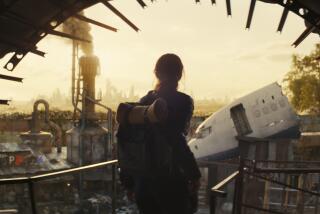Know nukes
- Share via
Newspapers, commentators, the public, you and I all evaluate certain actions as “risky” or “extremely risky” with little idea of the magnitude of the risk involved. However, insurance companies are not so offhand. They must evaluate risk correctly to stay in business, so they employ actuaries with special knowledge of probability and secure large databanks of past histories to set rates for insurance policies.
Some risks can be determined by trial and error. Flip a coin 100 times and you find that the chance for “heads” will be near 50%. Repeat the experiment 100 times and the plotted points will form a bell shaped curve with 50% at its center. Throwing darts at a bull’s-eye results in a similar curve about the center of the target. The more tries, the closer the fit of data to a bell curve. It’s not always easy to perform an experiment, so instead one must depend on past observations.
A non-negligible percentage of the public has the fear that the generation of electricity by nuclear fission reactors is risky. The Los Angeles Times on July 23, in a two-column, full page length editorial titled “No to nukes,” offered the opinion that “nuclear power is extremely risky.”
Really, how risky is nuclear power? The Three Mile Island meltdown was the worst accident in the history of U.S. commercial nuclear fission electricity generation. It occurred at a time when about 100 U.S. commercial reactors were generating electricity, with an average life span of about 30 years. Yet it caused no injuries or deaths. The emitted radiation was so low that it could hardly be measured. In the 20 years before and 28 years after that accident, no deaths from other U.S. commercial reactor meltdowns occurred.
But let’s assume that three people had died in that emergency, and from that hypothetical make a simple estimate of the risk of death to a person in the United States by the operation of 100 reactors. We will assume a U.S. population of 300 million, and a person’s lifetime of 75 years. Dividing the three deaths by the population of 300 million, we find the chance of a person’s death over his/her lifetime is 1 in 100 million.
We now compare that risk to those a person may take every day, like riding in a vehicle or walking along the street. In the United States, about 40,000 people are killed each year in vehicle accidents. Five thousand of these are pedestrians. In the 28 years since the Three Mile Island accident, over 1 million people have been killed in U.S. vehicle accidents. In a person’s 75-year lifetime, 3 million people will die. Thus, the chance of any one person being killed in his or her lifetime is 3 million divided by the 300 million population, or about 1 in 100. Driving is 1 million times more risky than nuclear fission generation of electricity. Riding in vehicles, even walking, with a risk of about 1 in 800, might be called “extremely risky.”
It might be even “extremely risky” to work at certain jobs in the United States. Information about risk may be found from the Statistical Abstract of the United States. The chance of work-related deaths per worker per year is about 22 in 100,000 workers for agriculture, 23 in 100,000 for coal mining and oil and gas extraction, 14 in 100,000 for construction, and 3 in 100,000 for manufacturing. The coal-mining accident at the Crandall Canyon Mine in Huntington, Utah, with three rescuers and six miners killed, is only the latest of many coal-mining tragedies.
Just living is risky. Fatalities per year per person from accidental falling are 6 per 100,000, from accidental drowning 1.5 per 100,000, from fires 1 per 100,000, and from firearms 0.3 per 100,000.
The writers of the Los Angeles Times editorial page and others who consider generation of electricity by nuclear fission reactors “extremely risky” might want to think twice before driving to work next week or even just living.
R. Stephen White is emeritus professor of physics at University of California, Riverside and the author of the “Energy for the Public: The Case for Increased Nuclear Fission Energy.” to read more about The Times’ Blowback feature.
More to Read
A cure for the common opinion
Get thought-provoking perspectives with our weekly newsletter.
You may occasionally receive promotional content from the Los Angeles Times.










